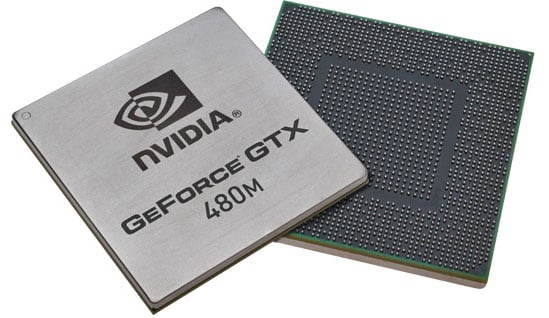Lately, it seems like Desktop Replacement notebooks don't get any respect, at least in our humble opinion. The trend for thin and light mobile computing is massive these days, with good reason. However, there is a market and usage model for these beefier, significantly more robust machines the deliver the multimedia horsepower, gaming prowess and a general computing experience usually found in a desktop, but in a form factor that can easily be moved from room to room and a variety of environments. Take the use case of a Home Theater PC, for example. Instead of an emaciated media streamer, current generation Desktop Replacement notebooks can connect to a stereo media receiver or HDTV over HDMI and offer a ton more gaming and HD video performance. Drop in a USB wireless keyboard/mouse and media center remote and you're set. And that's not to mention the
wireless HDMI technologies coming to market in the very near future that will enable coffee table control from across the room. You get the idea. There's a market niche' for the Desktop Replacement notebook, one that most power users can appreciate, but the thin-is-in crowd isn't exactly buzzing about.
It's a similar scenario to what can be observed in the flagship graphics card market segment, where performance bars are set high along with pricing, but the vast majority of sales volume shakes out to more mid-range product offerings. NVIDIA is a market juggernaut in this high-end arena and when it comes to notebook GPUs, the company religiously fires a cadence of mobile graphics product to follow-up their desktop counterpart releases.
In March of this year, NVIDIA launched their
GeForce GTX 480, aka Fermi desktop graphics card and though this new killer GPU is both big and hot, there was little question it offered record-breaking performance. Almost shockingly, only a calendar quarter later, they're now ready with that card's notebook-targeted variant, the GeForce GTX 480M. We have one of the very first notebooks to hit the market in-house with the new GeForce GTX 480M under its hood. Fittingly, NVIDIA turned to Clevo to ODM a machine that would house their new mobile gaming frame-rate crusher and it took residence in the Clevo D900F quite comfortably.
 GeForce GTX 480M Urban Assault Vehicle - Clevo's 17.1" D900 Gaming Notebook
GeForce GTX 480M Urban Assault Vehicle - Clevo's 17.1" D900 Gaming Notebook
 |
|
NVIDIA GeForce GTX 480M Notebook Graphics Processor
|
|
Specifications & Features
|
|
GPU Engine Specs:
| CUDA Cores |
352 |
| Gigaflops |
598 |
| Graphics Clock (MHz) |
425 MHz |
| Texture Fill Rate (billion/sec) |
18.7 |
Thermal Design Power
|
100 Watts TDP
|
Memory Specs:
| Memory Clock (MHz) |
600MHz (2400MHz Data Rate)
|
| Memory Interface Width |
256-bit |
| Memory Bandwidth (GB/sec) |
76.8 |
Feature Support:
| NVIDIA SLI®-ready |
2-Way |
| NVIDIA 3D Vision Ready |
Yes |
| NVIDIA PureVideo® Technology |
HD |
| NVIDIA PhysX™-ready |
Yes |
| NVIDIA CUDA™ Technology |
Yes |
| Microsoft DirectX |
11 |
| OpenGL |
3.2 |
| Bus Support |
PCI-E 2.0 |
| Certified for Windows 7 |
Yes |
Display Support:
| Maximum Digital Resolution |
2560x1600 |
| Maximum VGA Resolution |
2048x1536 |

As is the case with ATI's Mobility Radeon HD 5870, the GeForce GTX 480M is much more akin to NVIDIA's mid-range desktop GPU, rather than the 480-CUDA core equipped GeForce GTX 480 desktop chip. In fact, if you look closely at the specs, you'll note that the GeForce GTX 480M is in reality a clocked-down version of the
GeForce GTX 465. Whereas the GeForce GTX 465's core speed is 607MHz, the GTX 480M's core speed is 425MHz, though both chips employ 352 CUDA cores. The GeForce GTX 480M's memory interface speed (data rate) has also been scaled down a bit from 3206MHz on the desktop GeForce GTX 465 chip, to 2400MHz for the notebook-ready GeForce GTX 480M.
The net result is a notebook GPU solution that is currently unmatched in terms of high level specifications versus competitive notebook graphics chips, but also draws a lot less power than the nearest desktop equivalent chip in NVIDIA's line-up. TDP for the GTX 480M is 100 Watts, versus the faster clocked desktop version
GeForce GTX 465 at 200 Watts. In comparison, AMD's
Mobility Radeon HD 5870 has a 50 Watt TDP and offers a higher texel fill rate (28 Gtexels/sec versus 18.7 for the GTX 380M) but less memory bandwidth (64GB/sec versus 76.8GB/sec for the GTX 480M). But enough with the speeds and feeds, let's give you a closer look at the goods.







